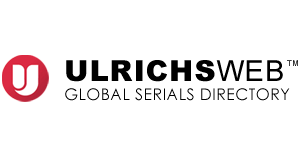Журнал включен в российские и международные библиотечные и реферативные базы данных
|
РИНЦ (Россия)
RINZ (RUSSIA)
|
Регистрационное агентство DOI (США)
DOI Registration Agency (USA)
|
Эко-Вектор (Россия)
Eco-Vector (Russia)
|
Ulrichsweb (Ulrich’s Periodicals Director
|
To the question about detergents for sanitary and hygienic treatment in a multi-profile hospital
DOI: https://doi.org/10.29296/25879979-2021-08-07
Issue:
8
Year:
2021
In the modern world, asepsis and antiseptics occupy one of the key positions in surgery. In clinical practice, these areas are mutually complementary and inseparable from each other. Destruction or reduction of the number of pathogenic microorganisms on objects of inanimate nature is called disinfection. There are such groups of disinfectants as: halogen-containing, oxygen-containing, surfactants, guanidines, alcohols, aldehyde-containing compounds. The variety of tasks facing disinfectants dictate the need to use substances that have both effectiveness, safety and a number of different special properties, such as bactericidal, fungicidal, virucidal, etc. At the same time, it is necessary to take into account the effect of disinfectants on the skin of medical personnel, aggressive bactericidal agents lead to irritation of the skin of the hands and, over time, the formation of allergic reactions. It is impossible to single out an ideal group of disinfectants that would be universal, each group has its own advantages and disadvantages. It is important to note that the use of disinfectants must first of all be safe for medical personnel and patients, not cause unwanted side effects and at the same time be effective in relation to hospital microflora.
Keywords:
disinfectants
surgical hospital
nosocomial infection
References:
- Makatsarija N.A. Ignats Filipp Zemmel'vejs. Akusherstvo, ginekologija i reproduktsija. 2016;10(1): 129–131. DOI: 10.17749/2313-7347.2015.10.1.129-131.
- Nizamova G.R. Primenenie antiseptikov: ot novatorskih idej N. I. Pirogova do sovremennosti. Vestnik OHiTA. 2021;1(1; 02): 28–34.
- Gostischev V.K. Obschaja hirurgija [Elektronnyj resurs]: uchebnik 5-e izd., pererab. i dop. M.: GEOTAR-Media, 2015. 728 s. ISBN 978-5-9704-3214-3. URL: http://www.studmedlib.ru/book/ISBN9785970432143.html.
- Ivanova E.B. Sovremennye antisepticheskie sredstva v profilaktike infektsij, svjazannyh s okazaniem meditsinskoj pomoschi. PM. 2016;5 (97): 140 –144.
- Pats N.V., Isaeva E.A., Tsiulja R.O. Sovremennye dezinfitsirujuschie sredstva, ispol'zuemye v lechebno-profilakticheskih uchrezhdenijah goroda Grodno, i riski dlja zdorov'ja meditsinskih rabotnikov, kontaktirujuschih s nimi. Zdorov'e cheloveka, teorija i metodika fizicheskoj kul'tury i sporta. 2019; 2 (13): 82–90.
- Shajdullina A.H. Dezinfitsirujuschie sredstva: chto vybrat'?. Remedium Privolzh'e. 2016; 6 (146): 34.
- Sbojchakov V.B. Mikrobiologija, virusologija i immunologija: rukovodstvo k laboratornym zanjatijam [Elektronnyj resurs]: ucheb. posobie / pod red. V.B. Sbojchakova, M.M. Karapatsa. M.: GEOTAR-Media, 2018. 320 s. URL: http://www.studmedlib.ru/book/ISBN9785970448588.html.
- Ashimova Zh.Sh., Boranbaeva G.H., Sagatbekova G.S. Galoidosoderzhaschie dezinfitsirujuschie sredstva. Okruzhajuschaja sreda i zdorov'e naselenija. 2019; 3: 97–-102.
- Balandina S.Ju., Charushina I.P., Aleksandrova G.A., Markovich N.I. Sravnitel'naja otsenka effektivnosti dezinfitsirujuschih sredstv pri provedenii tekuschej dezinfektsii v statsionare dlja VICh-infitsirovannyh patsientov. Vestnik PGU. Biologija. 2017; 1: 99–103.
- Fedorova L.S., Tsvirova I.M., Belova A.S., Tarasenko M.V., Pankratova G.V., Andreev S.V. Instruktsija № 1/15 po primeneniju sredstva «Perekis' vodoroda 6%» dlja dezinfektsii i sterilizatsii. M., 2015. 14 s.
- Kampf G. Gigiena ruk v meditsinskih organizatsijah. Fundamental'naja i klinicheskaja meditsina. 2018; 4: 60–70.
- Metody obrabotki operatsionnogo polja (obzor literatury) / A.M. Morozov, O.V. Pel'tihina, A.N. Pichugova [i dr.]. Vestnik novyh meditsinskih tehnologij. 2020; 27(2):51–56. DOI 10.24411/1609-2163-2020-16661.
- Palij A.P., Rodionova E.A. Dezinfitsirujuschie sredstva v sisteme protivoepizooticheskih meroprijatij. Izvestija Velikolukskoj gosudarstvennoj sel'skohozjajstvennoj akademii. 2017;2: 24–33.
- Shandala M.G., Fedorova L.S., Pankratova G.P., Efimov K.M., Ditjuk Aleksandr Ivanovich, Snezhko A.G., Bogdanov A.I. Gigienicheskie obosnovanija razrabotki i primenenija poliguanidinov kak antimikrobnyh profilakticheskih sredstv innovatsionnogo klassa. Gigiena i sanitarija. 2015;8: 77–81.
- Ashimova Zh.Sh., Sagatbekova G.S. Proizvodnye guanidina soli poligeksametilenguanidina, poligeksametilenbiguanidina i hlorgeksidina bigljukonata v dezinfitsirujuschih sredstvah. Okruzhajuschaja sreda i zdorov'e naselenija. 2019; 3: 94–97.
- Burlachenko A.S. Kontsentratsionnaja zavisimost' protivomikrobnyh svojstv razlichnyh poverhnostnoaktivnyh veschestv v otnoshenii bakterij vida Pseudomonas putida. Zhurnal SFU. Himija. 2021;14(2): 207–217. DOI: 10.17516/1998-2836-0229.
- Primenenie dezinfitsirujuschih sredstv v meditsinskih uchrezhdenijah (LPU). Meditsinskaja sestra [Elektronnyj resurs]. URL: https://www.omedsestre.ru/primenenie-dezinficiruyushhix-sredstv/#2, svobodnyj (data obraschenija: 06.11.2021).
- Primenenie dezinfitsirujuschih sredstv: obzor. Himitek [Elektronnyj resurs]. URL: https://www.chemitech.ru/blog/article/primenenie-dezinfitsiruyushchikh-sredstv-obzor/, svobodnyj (data obraschenija: 06.11.2021).
- Dzhumalieva G.A., Kravtsov A.A., Kasymov O.T., Sorombaeva N.O., Kurzhunbaeva Zh.B. Covremennye kriterii vybora dezinfitsirujuschih sredstv v sisteme infektsionnogo kontrolja lechebno-profilakticheskih organizatsij. Meditsina Kirgyzstana. 2010;8: 28–32.




